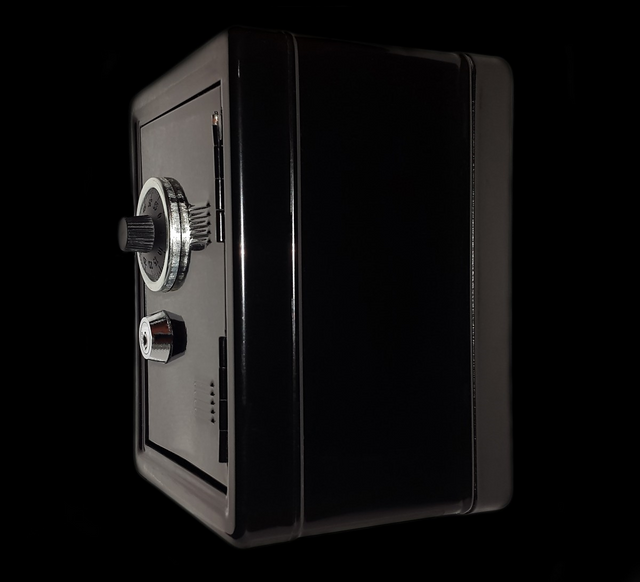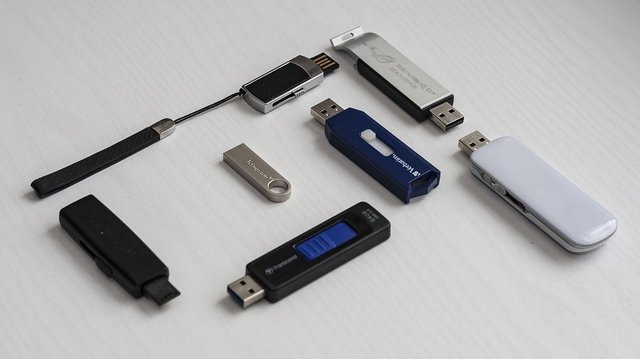Harnessing the Power of Creativity to Improve your Problem Solving Skills: Technique 1 (Addition & Subtraction)
Note: This article is about using creativity to improve your problem solving skills, and approximately a 20 minute read teaching you one technique. It is a big abstract and involves higher-level thinking, so it might not be for you. Here are the bullet points for it. Also, if you want to get RIGHT to the creative technique for problem solving I am talking about in this article, feel free to skip to the subheading “Creative Technique #1: Adding and Subtracting”.

Image Source Pixabay
Bullet Points
- I’m a business writer who is interested in the application of creativity for problem solving.
- Creativity is the most important economic resource of the 21st century, but apparently barely anyone is aware of this.
- Problem-solving is an essential and inescapable aspect for all of us, but we’re not really taught how to approach problems in different ways.
- Choosing to see a problem in just one way limits our capability for solving it, which is why it’s very dangerous to see things in just one way.
- I will discuss a creative technique (first of many), called adding/subtracting.
- The adding/subtracting technique encourages identifying influential or critical components for a problem, and tweaking them by increasing or decreasing aspects of them, in order to significantly transform a problem, and thus help with coming up with more solutions for it.
What is this about? Creativity and Problem Solving?
Hi, my name’s Adan Noriega, and I’m a business writer by profession. When I’m not writing business plans or reviewing marketing studies, I’m conducting my own research into the field of creativity. In my mind, creativity is the most important economic resource of the 21st century.

Image Source Pixabay
Unfortunately, it’s not well understood, oftentimes neglected, and there really isn’t much in the way of handbooks or guides on how to apply creativity. I find it fascinating because it’s something powerful and abstract, but something that can be unlocked in anyone to help them improve their problem solving toolkit.
I am writing a short series on how being more versatile in our thinking and willing to engage in divergent thinking can help improve our problem solving skills. My series will provide some easy to understand mental constructs that one can (hopefully) apply to any problem in order to see it differently and come up with more than one possible solution.
Often we can’t past figuring out how to solve a problem because we limit ourselves in seeing them in only one way. Or in seeing only one possible solution for them. This series will posit that there is value to be gained from seeing things differently and being willing to expand our perception.
Finally, it is important to note that I am not an authority in the field of creativity or problem solving. I suppose there are some problems out there that my tips won’t work on. I am writing this in the hope of it serving you, but if it doesn’t benefit you, then you’re free to move on elsewhere. As with any advice or guidance you read online, take what you can use and discard the rest.
Dealing with problems is an essential part of life that you can’t avoid
Our capacity to engage in problem solving is probably something innately human that delineates us from the other species on this planet. We all deal with challenges, whether they are human made, natural, caused by us, or even abstract. At the same time, we don’t all deal with the same things in the same way—we’re all in disparate situations, and the circumstances that we’re in fluctuate dramatically based on many factors beyond our control. However, most of us would say we deal with the same kinds of problems that other people deal with. So if we’re dealing with a fallen tree on the side of the road or not, most of us can probably relate to it at some level.
Unfortunately, you can’t really avoid engaging with problems, or even avoid challenges themselves. Obstacles will come your way regardless of the choices you make.

Image Source Pixabay
You want to move forward in life? BAM! A problem just came your way! Trying to sit still and not move anything? BAM! Another problem is headed your way! My point is that you just can’t live life so carefully that you avoid dealing with challenges. Even if you're just vegetating in a room, adversity of some form will reach you. Sometimes you will have to deal with things that you don’t have much control over—this could be a disease or the behavior of someone else. Despite the challenges of what’s going on, you do retain the power of deciding your attitude (which could in turn have an effect and transform the problem). Regardless of what situation you find yourself in, you always have the power to decide how you’re going to react. However, you’re rarely without some resources or tools that you can call upon when dealing with adversity.
Some difficult problems require more than one approach to solve
Now, not all problems are the same in terms of difficulty. Some problems can be solved very quickly, with little effort, or in a rote, mechanical way that doesn’t require too much cognitive effort. Others are so challenging and intractable that they require much more effort to be addressed. In those cases, entering a higher mental state can be useful, or at least a different psychological state: one that is much more imaginative and divergent than usual. Or in a more pragmatic sense, some problems may require a different approach from us than we’re accustomed to engaging in.
This article today is all about approaching problems in a different way than you’re normally accustomed to. Approaching problems differently comes about seeing them differently, and that’s rooted in your mental muscles. Your creative mental muscle is the starting point for how you go about identifying the solution for a problem. There are no limits on the power of your creative mental muscle. It’s the impetus behind heightened intuition, razor-sharp problem solving, and visualization for what could be.
Seeing a problem in just one way limits you in the kinds of solutions you are able to come up for it. If everything is a nail, then the only solution is a hammer. If you’re willing to be flexible and versatile in how you see a problem, you become more receptive to identifying a greater number of solutions. And the more solutions you come up with, the greater the likelihood that one of them is going to be a great solution. Additionally, it is important to emphasize that not every problem is so challenging. Not every obstacle requires an exertion of significant effort. Sometimes a nail is just a nail and just requires a hammer, and overthinking will make it into a bigger problem! Make sure not to go crazy and overcomplicate things unnecessarily.
Creative Technique #1: Adding and Subtracting

Image Source Pixabay
This first creative technique I will discuss is all about adding and subtracting “pieces” to the problem. In order to expand how you perceive a problem, first, identify what components make up the problem. How is it “composed”, what is it “made” of, what is it “connected” to? Then, identify the major critical components. What are the “heaviest” or “loudest” or “brightest” pieces? Finally, play around with adding and subtracting things to these major critical components of your problem until the problem is significantly transformed. What if you cut the “heaviest” thing in half, or tripled the sound of the “loudest” piece, or made the “brightest” feature opaque? Once the problem is transformed, it should be different, and a little easier to find solutions for it.
Sample Problem: The Locked Safe

Image Source Pixabay
Let’s say you’re trying to open a locked safe. You don’t know the combination, don’t have a key, and unfortunately, the safe is locked. You keep trying to turn the combination knob in hopes of the safe opening, but nothing happens. You keep trying different combinations, pulling on the safe lever and it’s still locked. You try this for 10-20 minutes, and afterwards you are starting to get restless. You haven’t made any progress. You decide to take a quick break, and then resume trying to open the safe. When you resume, what do you think you should do? Try to open the safe like you were before?
Technique Breakdown

Image Source Pixabay
Problems are usually composed of different pieces, elements, or components. Usually some of those parts are more “influential” or “heavier” or “predominant” or “overt” than others. Consequently, other parts are less “influential”, “lighter”, “subsidiary”, or “hidden” than others. Seeing the totality of how a problem is composed is not always possible, but what is usually possible is being able to identify its major components.
Once you’ve gotten the gist of the different components of a problem, the next step is to mull over which ones of them can be altered, adjusted, removed, inserted, or rearranged with another. This can be thought of in a logical or procedural format, but I find that what helps is permitting yourself to just play around with it. To allow yourself to stop thinking about the problem too empirically, and just “play around with the pieces.” To just mull over the various parts of your problem, in a relaxed way, and wait until some insight or idea clicks in your head (which should eventually happen). Now don’t get me wrong—there is value in seeing a problem procedurally. Rationality is a great problem-solving tool, but rationality cannot solve all problems. If a problem is complex enough and has various pieces to it, it can be mentally taxing on your mind to try and analyze and review each component in a logical, mechanical way. At that point, relaxing, permitting yourself to play around with it, and tapping into your intuition might be what allows you to move forward in order to solve it.
Step by step approach
Here’s a good step by step process to learn how to see your problem more creatively by adding or removing to it:
- First, identify the major (or most) components/parts/features of your problem.
- Secondly, determine the components that you are able to add to or remove from or alter in terms of its quantity in some way.
- Then, figure out what would happen if you added “more” to three components (e.g. more time, more pressure, more money, more feedback, more sunlight, more space, more constraints, more hands, more surveillance, more embarrassment, more bitcoin, more permission, etc.). How does the problem look now?
- Next, figure out what would happen if you removed or took away or created “less” to three components (e.g. less support, less foundation, less concrete mix, less attention, less right angles, less metric yards, less clothing, less Chinese, less gaps, less conflict, less interaction, less movement, less breathing space, less fuel, less validation, etc.). How does the problem look now?
- Repeat 3 and 4 until you come up with any potential solutions.
The key point
The key point is in trying to figure out what influential or critical component you can add or subtract from a problem that would significantly transform it. Ideally you would go about it trying to be precise and almost surgical, but perhaps your problem could benefit more from a more random and haphazard and crude approach.
Return to the Locked Safe
Let's return to the locked safe. You've spent 20 minutes trying to open it turning the knob. It hasn't worked, and you're ready to go back at it again. Now, you could try turning the knob randomly like before, or you could use the creative technique of addition/subtraction and then ask yourself...

Image Source Pixabay
a. Can I try to ADD more force?
b. Can I try to ADD someone else and have them try and help me?
c. Can I try to ADD more time and wait for the situation to change (e.g. someone comes with the key, the door opens on its own)?
d. Can I try to ADD to my door opening skills by learning or educating myself on safe and vault locks?
e. Can I try to ADD lubricant to the door to loosen it?
f. Can I try to ADD more tools that I can use?
g. Can I try to ADD nighttime (or sunlight) to the vault by waiting, and see if that has an impact on the opening of the safe?
h. Can I try to ADD another hand, and use both of my hands to turn the knob?
i. Can I try to REMOVE the high degree of force you I'm applying, and apply less force?
j. Can I try to REMOVE the safe door itself by destroying it?
k. Can I try to REMOVE the floor under the safe by digging so you can go under the safe (or the ceiling and go over it)?
l. Can I try to REMOVE the safe away from its current location, and take the safe with me to a different location?
m. Can I try to REMOVE the knob by destroying it?
Summary

Image Source Pixabay
Identifying the various components of a problem is helpful in better understanding the totality and structure for it. Identifying how an obstacle is composed in helpful in determining how it can be tweaked or modified by adding or removing something. Again, making a problem a bit more or less of itself doesn’t often alter much, but identifying and altering an important aspect of a problem can dramatically change a problem and can help in making it easier to solve. Ideally, being careful and precise is advised here, but if you’re not sure how to proceed with the various pieces of your problem, adding and removing things at random is the way to go here. Whatever you do, try to see what can be changed—altering the “chemistry” of a problem helps in transforming in, and ultimately, finding a better solution for it.
👍
~Smartsteem Curation Team
Hello @adann62, thank you for sharing this creative work! We just stopped by to say that you've been upvoted by the @creativecrypto magazine. The Creative Crypto is all about art on the blockchain and learning from creatives like you. Looking forward to crossing paths again soon. Steem on!